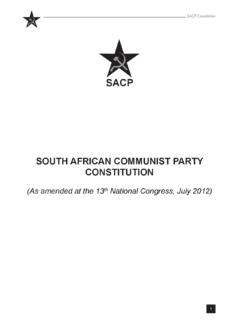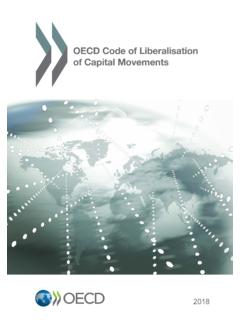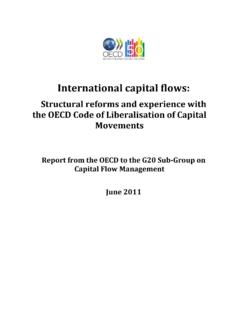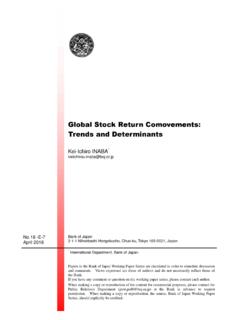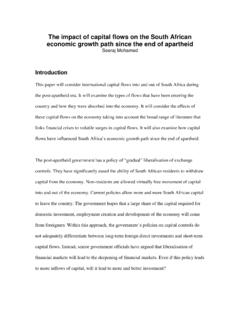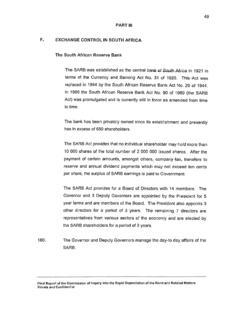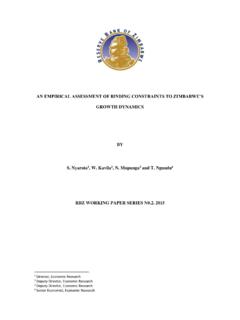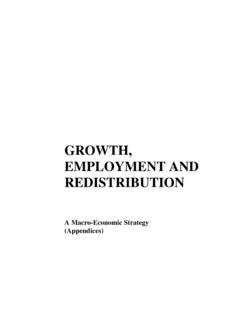Transcription of RESOLUTIONS - South African Communist Party
1 SACP 12TH NATIONAL CONGRESS RESOLUTIONS COMMUNISTS TO THE FRONT TO BUILD A BETTER SOCIALIST WORLD 1 SACP 12TH NATIONAL CONGRESS RESOLUTIONS A. COMPOSITE resolution ON THE SACP AND STATE POWER NOT IN G 1. That the question of state power is the central question of any revolution 2. That state power is located in diverse sites, including the executive, the legislatures, the judiciary, security forces, the broad public sector, state owned enterprises, and other public institutions. 3. That the strategic Medium Term Vision (MTV) of the South African Communist Party is to s e cure w o rkin g class h egem o ny in th e Sta te in its d ive rs ity and in all other sites of power. 4. That electoral politics are an important but not an exclusive terrain for the contesting of state power.
2 5. Working class power in the state is related to working class power in all other sites, including the imperative of developing organs of popular power, active fo rms o f p a rti cipa to ry de mo cra cy a nd so ci al mo b ilis a tio n. 6. That the structures of the SACP and our cadres have confronted many problems with the way in which the Alliance has often functioned, particularly with regard to policy making, the lack of joint programmes on the ground, deployments and e lecto ral lis t p rocesses. AND B ELI EVI NG TH AT 1. While the state of white minority rule has been abolished and important constitutional and other gains have been won, the post-1994 state requires s ignificant transform ation. 2 . This in clud es amon gs t o th e r th ings : a) Redressing the damaging impact of privatisation and restructuring policies that have weakened the capacity of the state and exposed key strategic areas to the dominance of private capital; b) Addressing the lack of a clear cadre development policy in the state; c) Building the strategic capacity of the state to drive developmental programmes; d) Rebuilding critical sectors of the public service, including health care and education, that are still reeling from the effects of years of down-sizing and other restructuring measures; e) Transforming the key area of local government, often the weakest sphere of governance.
3 2 3. That SACP cadres who are deployed as ANC elected representatives, or as public servants must continue to owe allegiance to the Party and cannot conduct themselves in ways that are contrary to the fundamental policies, principles and values of the SACP. The same principle applies to SACP cadres in other deployments, including within the trade union movement, community o rg a nis ations , etc. AND FU RT H ER B ELI EV IN G T H AT 1. The alliance requires major reconfiguration if the NDR is to be advanced, deepened and defended, and if we are to achieve the SACP s medium term vision objectives of building working class hegemony in all sites of power, in clud ing th e s tate ; 2. That this reconfiguration of the Alliance must include the following elements: a) The Alliance must establish itself as a strategic political centre; b) This political centre must develop a common capacity to drive strategy, broad policy, campaigns, deployment and accountability.
4 3. At the same time, this reconfiguration of the Alliance must respect the independent role and strategic tasks of each of the alliance partners. THEREFORE RESOLVE 1 . Tha t th e SAC P de e pens its cap a city to p ro vid e stra te gic le a ders h ip in re g ard to key policy sites of state power, including industrial policy, social policies and the safety, security and defence sectors. 2. That the SACP contests state power in elections in the context of a reconfigured Alliance. 3. To mandate the incoming CC to actively pursue the different potential modalities of future SACP electoral campaigning. These modalities could involve either: An electoral pact with our Alliance partners, which could include agreement on deployments, possible quotas, the accountability of elected representatives including accountability of SACP cadres to the Party , the election manifesto, and the importance of an independent face and role for the SACP and its cadres within legislatures.
5 OR Independent electoral lists on the voter s roll with the possible objective of constituting a coalition Alliance agreement post elections. 4. The SACP must actively engage its Alliance partners on these proposals. 5. The Party and State Power Commission must take forward its work to study international experiences closely, and to analyse in detail and evaluate our local reality. 3 6. The incoming CC must convene a policy conference within a year, in order to assess the feasibility, and potential advantages and disadvantages of the different modalities noted above, including further detailed research. 7. Whatever options are chosen, we must strengthen the SACP s policy capacity, and our organised strength on the ground. B. RESOLU TIONS ON TH E SAC P AND TH E ECONOM Y Nature and Features of the Colo nialism of a Special T ype Economy and the Post-1994 Trajectory NOT IN G 1.
6 The So uth Africa n e conom y, n o tw ith s ta nding imp orta n t ch a nges , p res e rves th e systemic features of its formation and consolidation within a colonial and special colonial framework, with the following features: a) Ownership and control of the commanding heights of the economy are still in the hands of private monopoly capital. b) It is based on a dependent capitalist accumulation path which relies heavily on primary product exports, particularly from mining and agriculture, and it is excessively dependent on imports of capital goods and many commodities. c) For this reason growth and development is exceedingly vulnerable to global flu ctua tio ns , es pe cially m ove me nts in comm odity p rice s . d) Infrastructure, energy and water policies were historically designed to support the mining sector, and these features continue to skew our economy.
7 E) The minerals, energy and finance complex continues to dominate the South African economy. Small and medium capital remains extremely weak, while the manufacturing sector has also tended to be weak. f) Historically, CST was reliant on a mass of cheap migrant labour for the mines, predominantly African males from reserves/Bantustans in South Africa and from other parts of southern Africa. g) The spatial inequalities created by apartheid capitalism are still intact and have often been worsened by the infrastructural investment patterns characteristic of our present growth path. 2. The democratic government inherited an economy that was in crisis for many years, reflected in highly racialised and genderised unemployment, poverty and inequality.
8 Economic policy in post-apartheid South Africa has tended to focus on 4 restoring capitalist profitability, through economic liberalisation , fiscal and monetary austerity, at the e xpense of transformation of the key features of the CST capitalist growth path. Key features of the economy since 1994 include: a ) Th e stru ctu re o f th e e conom y reta ins the bas ic fe a tures o f a n e xpo rt-o rien te d and import-dependent econom y, w ith a n under-developed domestic market. b) Exports have been diversified to include new products, especially autos, heavy chemicals; however primary exports, especially mining still constitute 30% of our exports. Manufacturing is weak while services and construction sectors have grown rapidly. The question is whether the growth of output and employment in these sectors is sustainable.
9 In mining, the relative dominance of gold has been replaced by platinum. Platinum mining is highly capital intensive and has created fewer jobs. c) Job destruction in the mining and agriculture sector has continued unabated resulting in mass expulsion of low skilled workers. The level of unemployment re ma ins h igh , w ith a rou nd 4 millio n cou n te d as unem ploye d b y th e officia l definition and around 7 million by the expanded definition. d) The unemployment rate has slightly declined in the last three years due to a marginal decrease in the economically active population and job creation p re d omin an tly in the s e rvices secto r. Th e qu ality of jobs is de terio ra ting as permanent secure employment is displaced by the sharp rise of casualised and sub-contracted labour.
10 For many years, the public service offered a route for professional employment for African women. The services sector has replaced the public service as a major employer of women, often in casualised jobs. e) Profitability of the capitalist system has been restored for the first time in many years quarter-by-quarter growth has been positive since 1999. Profit s relative share of national income has increased compared to the sharp drop going to workers. f) Austerity measures have succeeded in reducing the national debt, the budget deficit and inflation, but at the cost of growth, jobs and social development. g ) Sin ce 2 0 00 fis cal p o licy h as bee n m odes tly e xp a nsio na ry com bin e d with a decrease of nominal interest rates adding to the recent growth spurt.
